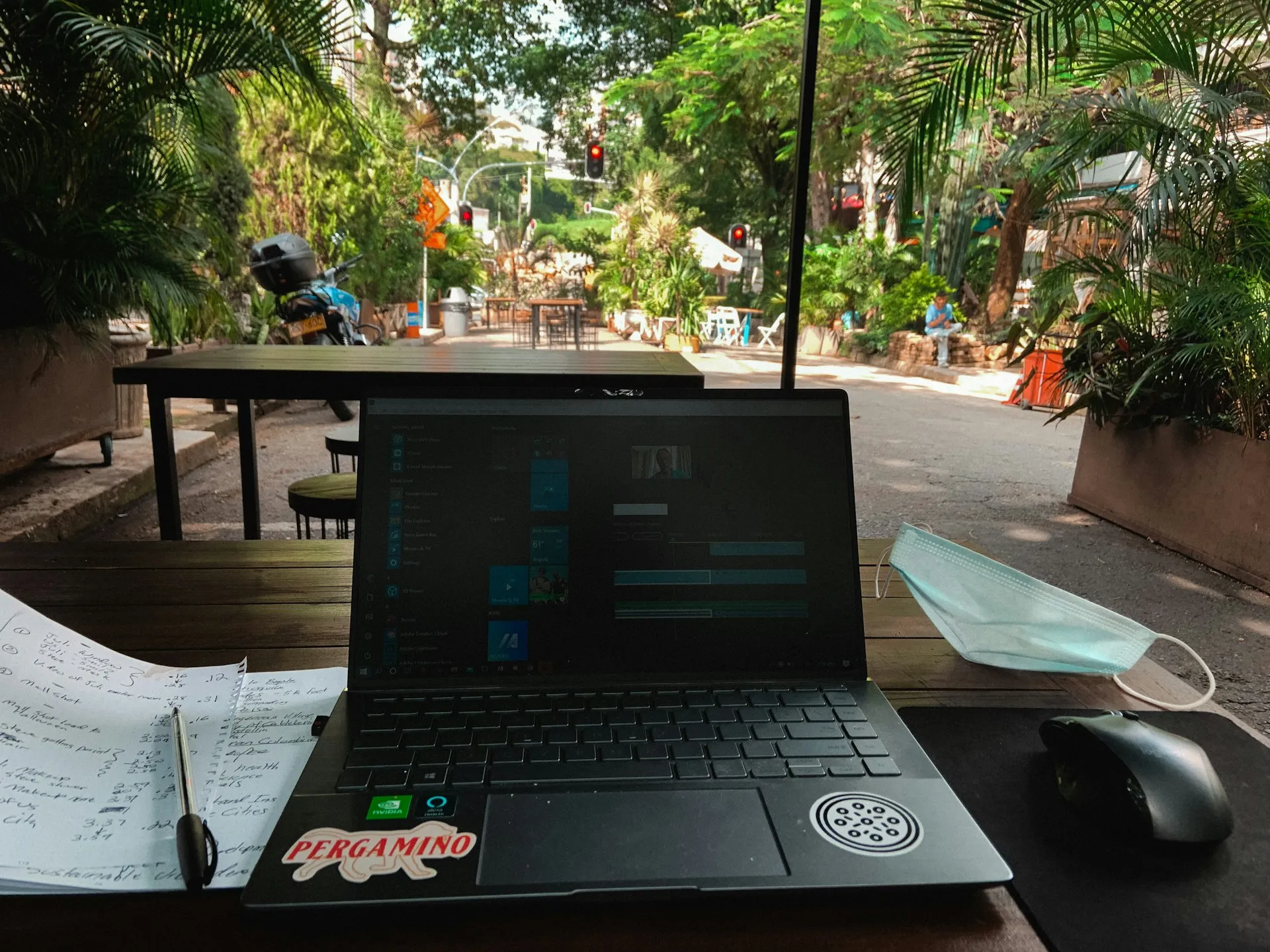How Digital Platforms Help You Find the Right People
How to Use AI to Find the Best Candidates?
Hiring the most suited candidate has always been challenging but crucial to business success. With the evolving digital technologies and many processes being handled distantly, finding the right people is both more important and more complex than ever. Traditional methods of recruitment no longer suffice in a market shaped by remote work, shifting skill demands, and changing candidate expectations. Digital platforms offer some help with meeting these new demands, providing smarter, faster, and more targeted ways to identify and engage top talent. Using AI, recruiters can better analyze candidate data, streamline processes, and focus more on building connections rather than manual filtering.
But what exactly has made recruitment so challenging in recent years? To understand how digital tools are helping, we first need to explore what caused this dramatic shift in hiring practices.
Disrupted Hiring: How the Rules of Recruitment Have Shifted
The involvement of artificial intelligence in recruitment and hiring processes was the answer to the latest significant transformations in the field. One of the most noticeable changes is the accessibility of the application process. With just a few clicks, candidates can now apply for dozens of positions on multiple platforms, leading to an overwhelming volume of applications and making it harder for recruiters to identify truly qualified candidates.

Additionally, the rise of global hiring, especially in tech and remote-friendly industries, means recruiters are often evaluating candidates from diverse cultural and professional backgrounds. Not all hiring professionals are equipped with the skills or tools to fairly assess international talent, which can result in missed opportunities or biased decisions.
Other major shifts include:
-
The rise of remote and hybrid work. Candidates nowadays expect flexible work models, forcing companies to rethink not only where people work, but how teams collaborate and perform.
-
Evolving skill demands. Technical proficiency and adaptability are now prioritized over traditional degrees or rigid career paths, challenging old notions of what makes a "qualified" applicant. In many modern industries, it’s no longer sufficient to assess a candidate solely based on their credentials. Real-world problem-solving skills, the ability to learn quickly, and relevant hands-on experience often carry more weight than formal education or neatly structured CVs.
-
Candidate expectations have changed. Applicants value transparency, purpose, and work-life balance more than ever, and they’re quick to turn down offers that don’t align with their personal values.

Considering the current state of the job market, recruiters need potent and smart tools to manage all the information they are required to process during their searches. And while it is possible to streamline the initial scrapping of candidates using SignalHire tools, further actions necessitate more digital solutions to complete the process successfully.
Digital Platforms and AI: Modern Tools for Smarter Recruitment
With traditional hiring methods struggling to keep pace, digital platforms and artificial intelligence in recruitment are stepping in to offer real solutions. These tools are designed not only to process high volumes of applications but to improve the quality of hiring decisions.

Digital platforms centralize candidate data, streamline communication, and often come with built-in analytics that help recruiters track success rates and time-to-hire metrics. They also provide tools that assess a candidate’s practical skills and real-world problem-solving abilities, often through simulated tasks, online tests, or portfolios that demonstrate hands-on experience. Platforms like LinkedIn, for example, allow candidates to showcase projects, endorsements, and recommendations, which highlight their capabilities beyond traditional credentials.
Meanwhile, the AI hiring process can include everything from automated resume screening to predictive analytics that assesses a candidate’s likelihood of long-term success within a role. AI-powered recruitment tools can also scan profiles for specific skill sets and experiences, to help identify candidates who may not have the “perfect” resume but possess the exact competencies the company requires.
What’s more, if you’re wondering how to use AI for recruiting, it’s not about replacing humans, it’s about enhancing what recruiters can do. AI can help identify hidden talent, eliminate unconscious bias, and speed up decision-making, allowing professionals to focus on the more human aspects of hiring.
Using AI for Recruiting: Best Practices
Incorporating AI into the recruitment process can reduce bias, improve decision-making, and bring a competitive edge to a company that is willing to try and change their hiring protocols. However, to do this effectively, the understanding which tool is better suited for the task is required. Below are some practical tips for integrating AI into your recruitment strategy, along with tools to consider for each.
- Automate candidate screening to save time
-
HireVue
-
Jobvite
-
Pymetrics
- Enhance candidate sourcing with AI algorithms
-
Rival
-
Beamery
-
Hiretual
-
Use AI for predictive analytics to improve hiring decisions
-
Eightfold
-
XOR
-
SmartRecruiters
-
Chatbots for real-time candidate engagement
-
Mya
-
Olivia by Paradox
-
XOR
-
Reduce bias with AI-driven assessments
-
HireVue Assessments
-
Codility
-
Kore.ai
How to find candidates for jobs? Using AI to automate the initial screening of resumes and applications allows HR teams to focus on top candidates. AI tools can quickly analyze large volumes of applications, highlight the most relevant ones, and filter out those who don’t meet essential criteria.
Tools to consider:

AI-driven platforms allow for sourcing candidates from multiple channels, including job boards, social media, and internal databases. AI can also suggest passive candidates who are a good fit for your open positions, expanding your talent pool.
Tools to consider:
Implement predictive analytics to evaluate how well candidates might perform in a role based on data-driven insights. AI can analyze historical hiring data and predict the success of candidates, improving the accuracy of hiring decisions.
Tools to consider:
AI-powered chatbots can interact with candidates in real time, answer questions, and schedule interviews. This improves the applicants’ experience by providing instant responses. Surprisingly, candidates are still often ghosted nowadays which brings frustration and hinders the employer brand of the company. Using AI to maintain open, friendly, and efficient communication can benefit both sides and should be accepted as usual practice.
Tools to consider:
Use AI-based assessments to evaluate candidates based on their skills and abilities, not their background or demographic factors. AI can help reduce unconscious bias by focusing on objective criteria such as problem-solving ability or technical proficiency.
Tools to consider:
Future Trends
The future of recruitment is hard to predict now but one thing is certain: the job market will become even more dynamic, calling for new adjustments to recently set up protocols. From predictive hiring to emotion recognition, emerging trends promise both exciting efficiencies and new ethical questions for recruiters and HR professionals.
One major development on the horizon is predictive hiring. By analyzing past data from successful hires, AI tools can forecast which candidates are most likely to thrive in specific roles. This approach reduces guesswork and allows organizations to make data-informed decisions more confidently. Similarly, voice and emotion analysis tools are being piloted to assess a candidate’s tone, energy, or stress level during interviews, raising both interest and eyebrows. These technologies claim to offer deeper insights into communication skills and emotional intelligence, though their use demands great caution and transparency.
At the same time, candidate experience is becoming a top priority for many employers. AI is already being used to personalize outreach and communication, schedule interviews faster, and reduce ghosting. In the near future, candidates can expect hyper-personalized experiences, where platforms remember their preferences, suggest roles that align with their values, and offer useful content to prepare for interviews.
The Importance of Human Touch
With all these changes, the human element remains irreplaceable. While algorithms can process data faster than any recruiter, they can’t fully grasp cultural nuances, emotional intelligence, or the subtleties of team dynamics. Empathy, intuition, and human judgment play a key role in assessing soft skills, resolving doubts, and making final hiring decisions. That’s why top recruiters are those who balance automation with compassion.

It’s also important to focus on long-term compatibility and shared values, not just short-term performance indicators. Employers increasingly seek individuals who align with company culture, contribute to team well-being, and grow with the organization. Digital tools can assist by mapping personality traits, communication styles, and even collaboration preferences, but these need to be interpreted with care.
Another important aspect where human input shines is relationship building. AI can tell you how to find contacts or recommend likely connections, but it’s still up to people to build trust and rapport. That personal interaction often determines whether a talented candidate accepts your offer or walks away. Maintaining this balance between tech efficiency and genuine communication will define successful recruitment moving forward.
Ultimately, the best future is one where AI handles repetitive tasks and big data, while humans stay focused on what truly matters—people. By staying open to innovation without forgetting the importance of intuition, fairness, and empathy, companies can create smarter, more inclusive hiring processes that benefit both sides of the table.
Conclusion
The tools a recruiter is able to use nowadays are multiple and varied. But with so many options, where does one even begin, and how do you choose the right tools for your specific needs? The only way is to start somewhere and see what works best. From AI-powered tools on traditional recruiting and job-searching platforms to specifically designed AI agents, the options are ample and allow companies to improve their hiring process significantly, making them more efficient, accurate, and inclusive.
However, it’s important to remember that no technology can replace the human touch. Successful recruitment still relies on empathy, intuition, and personal connection, qualities that no algorithm can replicate. By combining the best of both technology and human insight companies can elevate their recruitment strategies to a new level, attracting top talent and improving their employer brand.